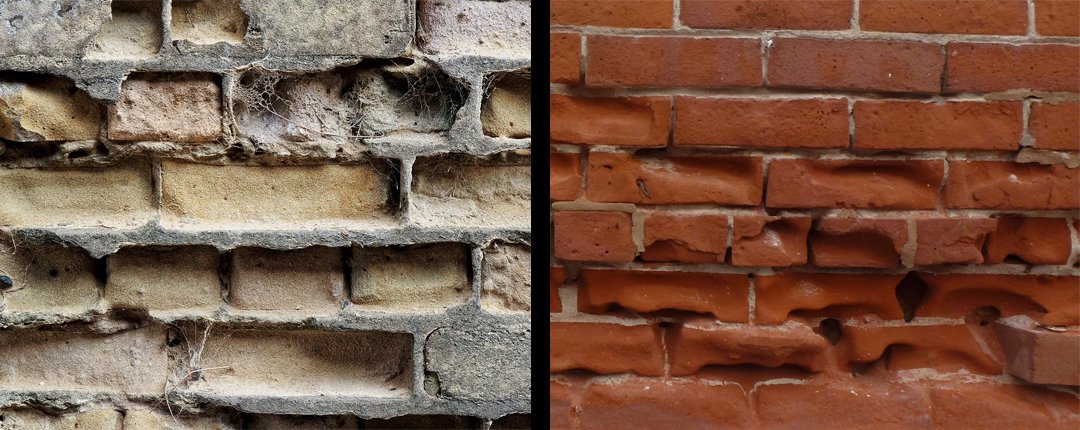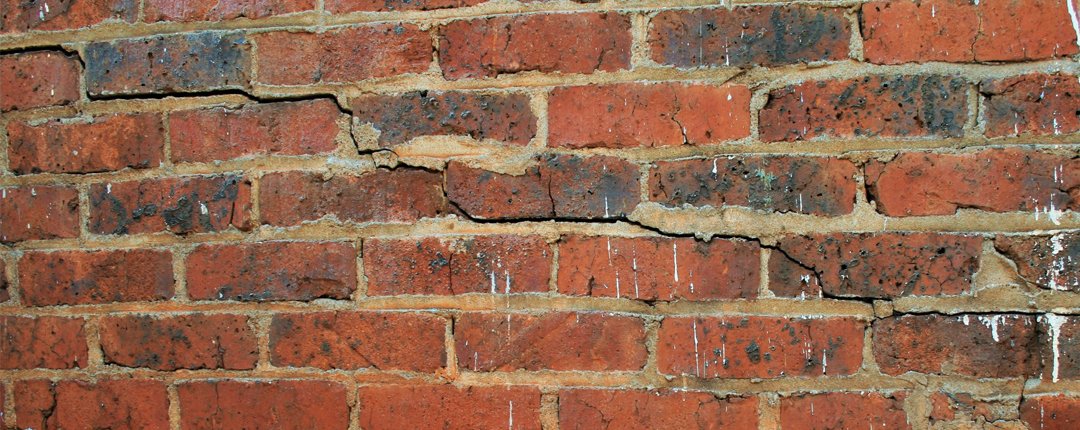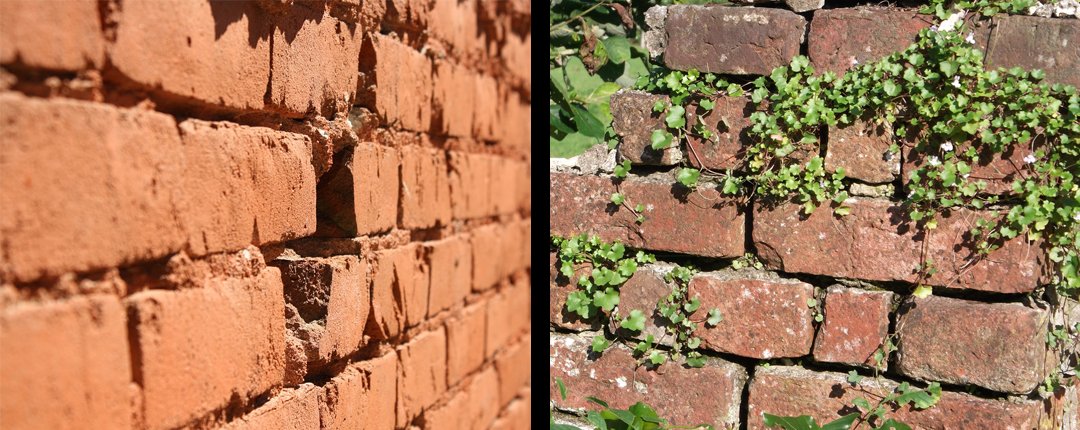Brickwork can become damaged for a number of reasons, and house owners generally will not know why. Below we have detailed everything with pictures so you can match your specific damaged brickwork with the repair it may require, the list will be addressed as follows:
- Problem – What type of damage has occurred to the brickwork?
- Reason – Why the damage to the brickwork has happened
- Solution – How we can repair the issue effectively
- Dos & Don’t’s
Eaten away / Hollow Damaged Brickwork

Problem
The brickwork on my house/walls looks like its been eroded away from the mortar joint around it, or the faces of the bricks look like they’ve snapped off completely, some in chunks.
Reason
Often this issue is seen on older more historic or listed buildings. The general reason for this is because of the repointing mortar used is far too strong, and not sacrificial to the bricks eg “using any cement based mortar with a soft “Red Tudor” brick.
What happens is the cement based mortar is so strong it repels moisture (rain, damp etc.), so rather than the moisture being able to escape through the joints (as a lime based mortar would) the bricks over-saturate themselves to the point of erosion and begin to break down over time.
Solution
How to repair water damaged/eroded bricks? Firstly the cement-based mortar needs to be extracted very carefully and repointed using a specific lime based mortar, that gives the right sacrificial protection for the specific brick type. In many instances bricks with severe damage will need completely extracting and replacing – in this instance a matching replacement brick will be required, or best case scenario, the opposite side of the brick is still intact and can be spun 180 degrees to be re-laid.
Dos & Don’ts
Dos – Have a Level-3 Heritage-qualified mason fully analyze the issue as well as carry out the repair, such as the masons of STAGEMAN.
Don’ts – Do NOT have a builder use ANY cement based mortar regardless of strength to repair this issue, as it will only accentuate and even accelerate the problem further.
Cracks in Brickwork

Problem
There is a crack running diagonally or horizontally through my house/wall. Some of the bricks have cracked in places too.
Reason
There are a number of reasons why this could occur including damp issues, structural subsidence, footing issues, bond failure, or even outside damage by force such as a car accidently driving into your garden wall.
Solution
How to repair the crack in your building or wall? The issue would have to be assessed for it’s severity and exact cause, however in a lot of cases we are able to use a stainless steel and resin bond system that strengthens through sections of the crack allowing weight distribution to flow evenly and stop the problem; bricks may need replacing and the sections repointing after.
Dos & Don’ts
Dos – Have a qualified specialist analyze the issue, as for worst-case scenario you may need a structural engineer. Please contact STAGEMAN today to discuss your repairs.
Don’ts – It’s advisable not to attempt a DIY fix to such problems, as you could be masking a more severe issue, or not correctly repairing the problem at all. Always seek advise from a professional.
Holes in Pointing / Holes in Brickwork

Problem
Holes in the joints between brickwork often cause damp and cold issues, but why are they there and how can they be repaired?
Reason
Most of the time mortar falling out or looking eroded is simply the fact that it’s old and needs replacing. Sometimes it’s because the mortar that was used isn’t fit for purpose or was incorrectly gauged, even hard/severe weathering can cause these symptoms too. Brickwork close to vegetation such as tree roots, shrubs or climbing plants can grow through brickwork to cause this. There are even cases where the issue is caused by ‘mortar bees’; Mortar bees will burrow into the mortar to live in the hollow of a brick or house cavity.
Solution
In all cases the existing cracked/eroded/weathered mortar will need carefully extracting and replacing with a historically suitable or sacrificial mortar.
In the case of mortar bees a specialist will be required to extract them before re-pointing can commence.
Dos & Don’ts
Dos – Send pictures and descriptions to us to help you analyze and solve the problem
Don’ts – If Mortar Bees are present do not attempt to fix the problem yourself as they may sting you, please contact us. Not sure if mortar bees are the problem? Contact us for a full analysis.

